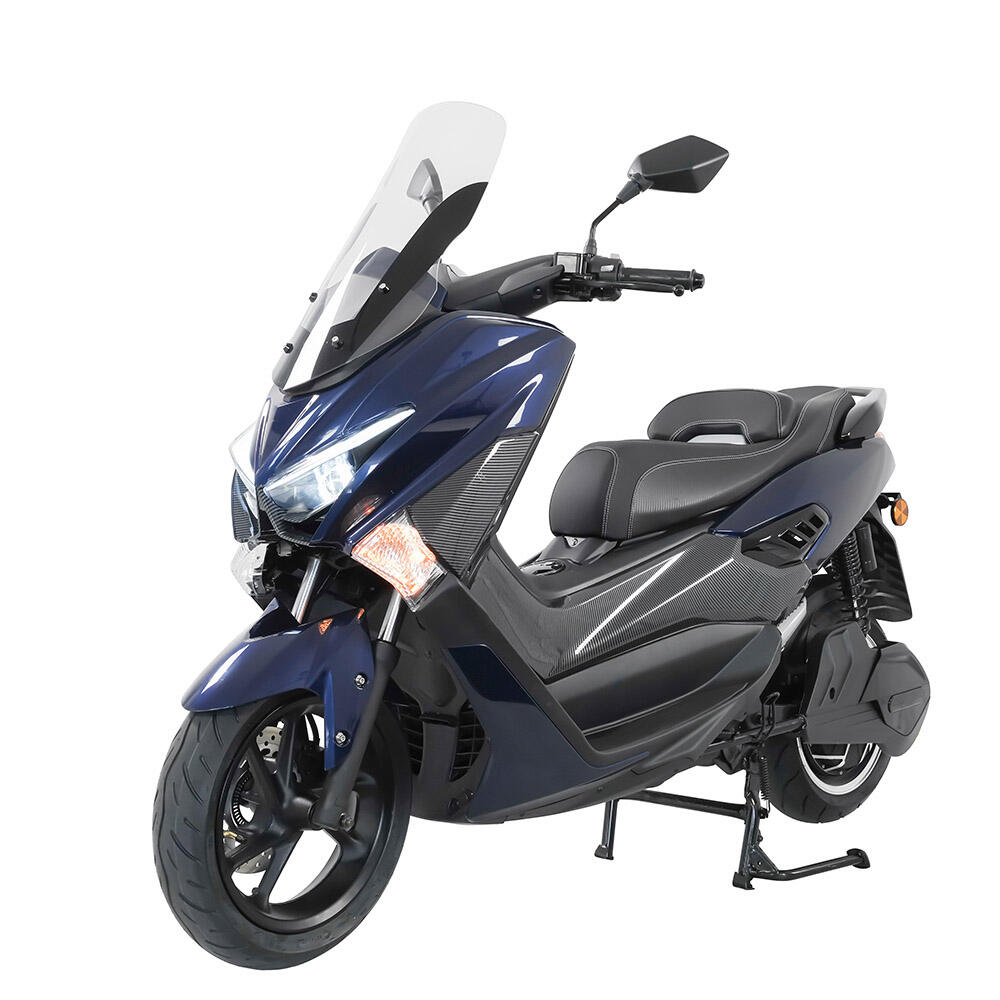Essential Battery Care Strategies for Electric Two-Wheelers
The heart of every electric motorcycle lies in its sophisticated battery system. As more riders embrace sustainable transportation, understanding how to properly maintain and charge your electric motorcycle battery becomes crucial for optimal performance and longevity. Modern lithium-ion batteries powering these vehicles represent a significant investment, making proper care not just about maintaining performance, but also protecting your financial investment.
While electric motorcycle batteries are designed to be robust and reliable, their lifespan and efficiency heavily depend on charging habits and maintenance practices. With the right approach, you can significantly extend your battery's life while ensuring consistent range and performance throughout its service life.
Understanding Your Electric Motorcycle's Battery System
Battery Chemistry and Architecture
Most electric motorcycle batteries utilize advanced lithium-ion technology, specifically designed for high-performance applications. These power units combine multiple cells in series and parallel configurations to deliver the necessary voltage and capacity. Understanding this fundamental architecture helps riders appreciate why certain charging practices are recommended over others.
The battery management system (BMS) plays a crucial role in monitoring cell health, temperature, and charging status. This sophisticated electronic overseer helps prevent overcharging and ensures balanced cell operation, but it still relies on proper user habits to maintain optimal battery health.
Performance Characteristics and Limitations
Electric motorcycle batteries exhibit specific performance characteristics that influence charging strategies. They perform best within certain temperature ranges and have optimal discharge depths that maximize their lifespan. Knowing these parameters helps establish effective charging routines that preserve battery health while meeting daily riding needs.
Temperature sensitivity particularly affects charging efficiency and battery longevity. Extreme temperatures, both hot and cold, can significantly impact battery performance and charging capability. Understanding these limitations helps riders adjust their charging habits according to environmental conditions.

Optimal Charging Practices for Extended Battery Life
Strategic Charging Timing
Timing your charging sessions strategically can significantly impact battery longevity. The best practice involves maintaining the charge level between 20% and 80% during regular use. This range minimizes stress on the battery cells and reduces degradation over time. For longer trips, charging to 100% is acceptable but should not be a regular practice.
Consider scheduling your main charging sessions during off-peak electricity hours, typically overnight. This not only saves on energy costs but also allows for slower, more battery-friendly charging rates when time permits. However, avoid leaving the battery at 100% charge for extended periods.
Temperature Management During Charging
Proper temperature control during charging sessions significantly affects battery health. Charging in extreme temperatures can accelerate battery degradation. Aim to charge in environments between 60°F and 80°F (15°C-27°C) for optimal results. If possible, park your electric motorcycle in a climate-controlled space during charging.
Allow the battery to cool down after riding before initiating a charging session. Similarly, if the battery has been exposed to cold temperatures, let it warm up naturally before charging. These simple temperature management practices can significantly extend battery life.
Advanced Maintenance Techniques
Regular Battery Health Monitoring
Modern electric motorcycles often come equipped with sophisticated battery monitoring systems. Regular checks of battery health metrics through the vehicle's display or companion app provide valuable insights into battery condition. Pay attention to any unusual changes in charging time, range, or performance indicators.
Keep detailed records of charging cycles, performance metrics, and any unusual behavior. This documentation helps identify patterns that might indicate developing issues and allows for proactive maintenance before problems escalate.
Seasonal Adaptation Strategies
Battery care requirements change with seasons. During winter months, consider using a battery thermal management system if available. For extended storage periods, maintain the charge level at approximately 50% and check the battery monthly. In summer, avoid charging immediately after riding in hot conditions.
Adjust your riding and charging patterns according to seasonal conditions. Winter riding may require more frequent charging due to reduced efficiency in cold weather, while summer riding might benefit from more strategic charge timing to avoid peak heat periods.
Troubleshooting Common Battery Issues
Identifying Warning Signs
Early detection of battery issues can prevent more serious problems. Watch for signs like unusual charging times, unexpected range reduction, or inconsistent performance. These indicators often signal the need for professional assessment or adjusted charging practices.
Pay attention to charging connector condition and ensure proper connection during every charging session. Loose connections can cause charging inefficiencies and potential damage to both the battery and charging system.
Professional Maintenance Schedule
Regular professional inspections complement home maintenance practices. Schedule annual battery diagnostics with certified technicians who can perform detailed health assessments and identify potential issues before they become serious problems.
Keep up with manufacturer-recommended maintenance schedules and software updates. These often include battery management system optimizations that can improve charging efficiency and overall battery performance.
Frequently Asked Questions
How often should I charge my electric motorcycle battery?
For optimal battery life, charge your electric motorcycle when the battery level falls to around 20-30%. Avoid letting it drop below 10% or frequently charging to 100%. Daily charging is acceptable if you're using the bike regularly, but maintain the 20-80% charge range for routine use.
Can I use fast charging all the time?
While fast charging is convenient, regular use can accelerate battery degradation. Reserve fast charging for occasional use during long trips or emergencies. Standard charging rates are better for routine charging and will help maximize battery lifespan.
What's the typical lifespan of an electric motorcycle battery?
With proper care and charging habits, most electric motorcycle batteries can last 5-8 years or 50,000-80,000 miles. However, actual lifespan varies based on usage patterns, charging habits, environmental conditions, and maintenance practices. Following recommended charging guidelines can help achieve or exceed these expectations.

